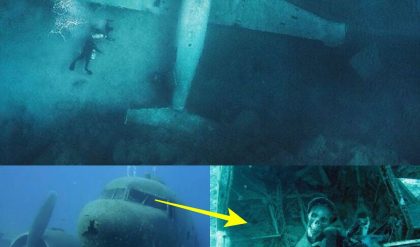King Seqenenre Tao II’s mummy was originally buried at Dra’ Abu el-Naga’, and later reburied at Deir el-Bahari in his original coffin. It was discovered in the Deir el-Bahari cache (“DB320”), revealed in 1881.
The body of this king, who died in his forties, was poorly preserved. However, the brain is still in the cranial cavity and the mummy’s mouth still has a complete set of healthy teeth. His mummified head depicting his battle wounds.

The king’s head is covered with horrific wounds: a dagger thrust behind the ear, after which, perhaps, blows rained down upon him. Mace blows smashed his cheek and nose and a battle-axe cut through the bone above his forehead.
As shown by a literary tale of later date, Seqenenre was contemporary with Apophis, one of the last great Hyksos kings. According to the tale, the Hyksos ruler provoked a quarrel by claiming that hippopotamuses at Thebes were disturbing his sleep at his delta capital in Avaris, 400 miles (644 km) away. Unfortunately, the preserved text ends with Seqenenre and his court pondering a suitable response.
“It came to pass that the land of Egypt was in misery, as there was no Lord, (functioning) ⟨as⟩ a (proper) king of the time. It happened that King Seqenenre, was (but) Ruler of the Southern City and misery was in the city of the Asiatics, while Prince Apophis was in Avaris and the entire land paid tribute to him, delivering their taxes in full as well as bringing all good produce of Egypt.
So King Apophis adopted Seth for himself as lord, and he refused to serve any god that was in the entire…”
― The Literature of Ancient Egypt: An Anthology of Stories, Instructions, Stelae, Autobiographies, and Poetry (#aff)
Seqenenre Tao, also known as Seqenenre Tao II, was an ancient Egyptian king who ruled during the 17th Dynasty. While his reign was relatively short, Seqenenre Tao played a significant role in Egyptian history. His main achievement was his involvement in the struggle against the Hyksos, a foreign dynasty that controlled parts of Egypt at the time.
Seqenenre Tao is believed to have initiated a rebellion against the Hyksos, aiming to liberate Egypt from their rule. His efforts were part of a larger movement that eventually led to the expulsion of the Hyksos and the reunification of Egypt under the succeeding kings of the New Kingdom.
Seqenenre Tao’s bravery and determination in challenging the Hyksos occupation earned him the title “The Brave” or “The Courageous.” His actions laid the groundwork for the subsequent military campaigns that would ultimately drive out the Hyksos and restore Egyptian sovereignty.
Second Intermediate Period, 17th Dynasty, ca. 1560-1555 BC. Now in the National Museum of Egyptian Civilization (NMEC), Cairo. JE 2609

Daughter of king Senakhtenre Ahmose and his wife Tetisheri, Satdjehuty (Daughter of Thoth) was a sister-wife to her brother king Seqenenre Tao and held multiple titles including, “King’s Wife”, “King’s Sister”, and “King’s Daughter”. Sitdjehuti was also the sister of queens Ahhotep I and Ahmose-Inhapy, also sister-wives to their brother…

Ahmose Nefertari was the sister and Great Royal Wife of king Ahmose I, the first king of the 18th Dynasty. After taking the reins from the Hyksos’s hands and unifying a dismantled Egypt, Ahmose I was the first ruler of Egyptian origin to bring Egypt into what is referred to…

This fragmentary face of Queen Sitdjehuti is the upper part of her coffin, which was made of gold-plated sycamore wood and stucco. Sitdjehuti was a princess and queen of Egypt 3,500 years ago. Sitdjehuti was the daughter of King Senakhtenre Ahmose and Queen Tetisheri. She was the wife of her…





